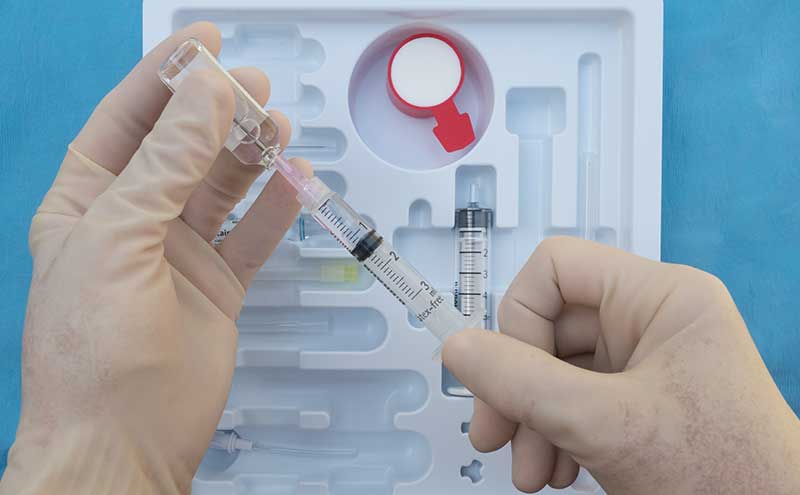
Lidocaine Toxicity
I use topical preparations of lidocaine daily in the emergency department (ED) to temporarily anesthetize an area of skin for a procedure. It is painless, has quick onset, works well, and has a low side effect profile. With older children, I will inject lidocaine with similar results and only a small poke. But a “low” side effect profile does not mean “no” side effects. What happens when too much lidocaine is injected or a pre-procedure application at home goes awry?
Example Case: Emergency Medical Services (EMS) is called to the home of a 5-month-old female who had EMLA 2.5% (lidocaine/prilocaine) applied to a port wine stain prior to a dermatologic procedure. Parents applied the cream over the arm, chest, and neck. Fifteen minutes after application, the patient began to have abnormal movements and became listless. On presentation to the ED, pulses were present but weak, there were abnormal respirations with poor effort, and there was low voltage jerking of the arms. Benzodiazepines were used with no change in status in the ED and the patient was intubated with propofol with resolution of seizure activity. An electrocardiogram (ECG) at that time showed normal function, no signs of ischemia, and no changes to the QRS or PR intervals.
Lidocaine toxicity is rare but does occur, resulting in neuro- and cardiotoxicity. This is due to the mechanism of action of lidocaine on the sodium channels. Cells that rely on a sodium action potential will be affected, including central nervous system (CNS) and cardiac cells. The CNS will be affected first with tongue numbness, lightheadedness, muscular twitching, followed by seizures. Respiratory and cardiac arrest eventually will present at higher doses. There is a nice dose dependent chart in Goldfrank’s Toxicology Textbook showing symptom escalation.
If these symptoms occur outside the hospital setting, it can be difficult to determine what the causative etiology was—I am certainly not obtaining lidocaine levels with my Utox and serum alcohol levels on altered patients. So, history and physical examination become paramount. Examining the patient from head to toe for signs of topical lidocaine application or large scars or port wine stains may help. If the patient is in acute distress, the same rules apply: A, B, C’s. Securing an airway, trying to stop the seizure (benzos are preferred over propofol as first line due to propofol being a cardiac depressant), and maintaining adequate circulation. There are lidocaine levels in most labs, but they are slow to return and will not change management.
What will change management? Abnormal ECG’s will change what the ED physician does. Use of intralipids in cardiotoxicity will potentially save the patient from further demise. A bolus of intralipids has a theoretical mechanism of creating a lipid sink of the lidocaine (or other toxin) and allowing for slower release, allowing the liver to metabolize it. There is no true reversal agent for lidocaine or prilocaine (which is also in EMLA). Greater scrutiny, and a toxicology call, should be made with Bupivacaine, which has a much longer half-life and thus can continue to cause issues.
Case Conclusion: The patient had lidocaine levels drawn at the time of presentation that were elevated. There was no evidence of methemoglobinemia on laboratory studies. Toxicology recommended airway/respiratory support and seizure control but noted no intralipid needed given absence of cardiotoxicity. The patient was admitted to the pediatric intensive care unit (PICU) and was extubated <24 hrs after presentation with full recovery.
This does not mean that EDs should toss their EMLA supplies or injectable lidocaine doses. But, the takeaway should be as follows: do not use EMLA indiscriminately over large portions of an infant. Or, if there are multiple lac repairs (such as a trauma), consider staged repair as able or other means of analgesia. These measures will allow for the safe use of lidocaine (IV or topical) in ED patients. Another safety measure is to place a lidocaine maximum per kg on the suture cart to keep providers aware that injecting too much is a possibility.
Max allowable dose Formula (injectable):
- Maximum allowable dose in mg/kg X (Weight in kg/10) X (1/Concentration of local anesthetic %)
- Ex: 1% lidocaine w/o epi in a 10kg child. [(3*10kg)/10]*(1/0.1)= 3mL
- Maximum Safe Doses: Lidocaine– Without epinephrine = 3-4.5mg/kg
- Bupivacaine: with or without epinephrine = 2mg/kg
Intralipid use: Individual hospital pharmacies may have slight differences in bolus and drip amounts. This is a standard therapy-bolus of 1.5mL/kg followed by a drip of 0.25mL/kg for 30-60 mins. Max dosing is 12mL/kg over 24 hours.
References:
- Walsh K, Arya R. A simple formula for quick and accurate calculation of maximum allowable volume of local anaesthetic agents. Br J Dermatol. 2015 Mar;172(3):825-6. doi: 10.1111/bjd.13335. Epub 2015 Jan 19. PMID: 25113018.
- Nelson LS, Howland MA, Lewin NA, et al, eds. Goldfrank’s Toxicologic Emergencies. 11th ed. New York, NY: McGraw-Hill Education; 2019.
- Ok SH, Hong JM, Lee SH, Sohn JT. Lipid Emulsion for Treating Local Anesthetic Systemic Toxicity. Int J Med Sci. 2018;15(7):713-722. Published 2018 May 14. doi:10.7150/ijms.22643
Jonathan Eisenberg, MD




